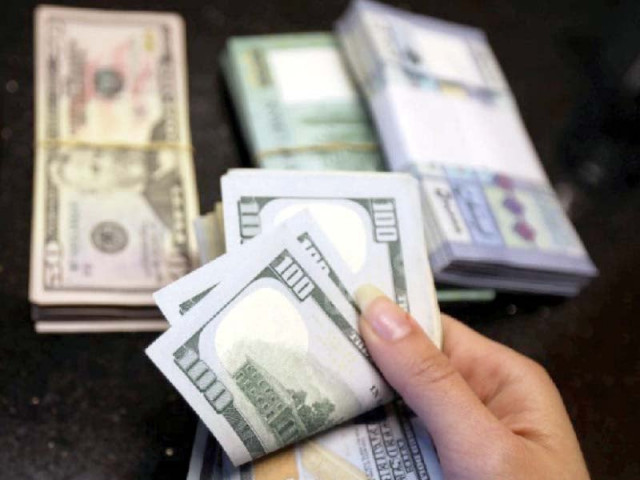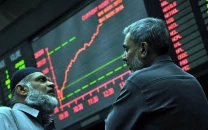US dollars disappear from market
Traders question mechanism used by SBP to ensure availability of greenback

The foreign exchange market is facing a severe shortage of US dollars despite the rupee remaining largely stable in the interbank market, leaving traders questioning the credibility of the mechanism in place being used to ensure availability of the greenback. “The declining trend of the dollar has proved to be meaningless as a majority of exchange companies and dealers have no dollars, and this shortage has persisted for almost a week,” said Mian Anjum Nisar, the former president of the Federation of Pakistan Chambers of Commerce and Industry (FPCCI).
He asked the central bank to become more vigilant and take stringent action to ensure the presence of US dollars in the open market. Employers Federation of Pakistan (EFP) President Ismail Suttar commented, “Despite the rupee gaining strength, there is a widespread shortage of US dollar available to money exchangers and dealers in Pakistan. The situation has frustrated importers as they are unable to purchase the greenback against better exchange rates. Attributing the shortage to alternative channels of payments being used by importers, he said, “The government has heavily discouraged imports of late, informally asking the banks of Pakistan to avoid opening any Letters of Credit (LCs) and discouraging them from accepting any forward bookings on the US dollar,” he remarked.
“As a result, importers have been using alternative channels to make sure payments are made to their foreign partners,” said Suttar. He illustrated this giving the example of how importers were buying dollars from the Afghan Transit, and other informal channels, to make payments as these dollar outflows do not show in the current account deficit (CAD). The former president of FPCCI stressed the need for bold steps, especially given the volatile nature of the rupee’s stability against the greenback. He pointed out that, “Currently, limited transactions are being held against the daily regular transactions of up to $60 million dollars in the open market, as it is feared that the dollars are being smuggled to Afghanistan.
Despite the central bank’s measures, smuggling remains rampant indicating that not all the government institutions are on the same page,” he said, urging the government to revisit its trade and immigration policies with Afghanistan and Iran. The rupee’s depreciation was driven primarily by dwindling foreign reserves and uncertainty regarding inflow commitments despite Finance Minister Ishaq Dar’s constant assurances that the rupee was undervalued and would soon recover to its real value of Rs200 per dollar. Nisar further highlighted the decline observed in the CAD for the third month in a row this September.
“It fell to $0.3 billion, less than half the level in August; in Q1FY23, CAD fell to $2.2 billion from $3.5 billion seen in Q1FY22, mainly due to a decline in imports. This decline is a good sign for the South Asian economy already facing dwindling foreign exchange reserves,” he added. The Chief Operating Officer (CEO) of Arif Habib Commodities, Ahsan Mehanti observed that “The unavailability of dollars is a major issue for importers; both essential items and non-essential items are at risk in case of no respite.” “The International Monetary Fund (IMF) program has also bound the State Bank of Pakistan (SBP) to purchasing dollars from the open market for imports, causing the shortage.
Banks have been supportive by avoiding speculations; however, the formal channels should support the informal channels as well for stability, he said. Nisar maintained that having a clear policy to curb volatility in the exchange market is a must and that “The central bank should be fully geared to act and monitor the movements more vigilantly, being ahead of the curve as they have more information than an average market player.” Further, the government needs to relax rules for exchange companies, as the stringent procedural requirements were making customers reluctant to approach the open-market. Amid declining foreign exchange reserves, Pakistan has faced an exchange rate crisis multiple times this year with authorities vowing a crackdown on speculators.
The promised action comes in tandem with wild swings seen by the rupee that hit record-lows in the interbank market, and witnessed its worst monthly performance in July in over 50 years. “The sentiment and dollar supply are expected to improve going forward with the expected inflows from the World Bank and other lenders,” said Tahir Abbas, Head of Research at Arif Habib Limited (AHL), adding that “the IMF review is also scheduled next month which will unlock a $1 billion tranche”. “Moreover, speculations are rife about Prime Minister Shehbaz Sharif’s visit to China next month, with hopes that it will bring respite to Pakistan in terms of external financing,” said Abbas.
The former FPCCI president added that “Ishaq Dar’s return as finance minister did trigger a bullish trend in the currency market, with the rupee appreciating nearly 10% in less than three weeks, but it also led authorities suspecting manipulation by banks and exchange companies.” Meanwhile, the SBP said that its investigation into the alleged manipulation, by commercial banks, of foreign exchange operations in the country would be completed in early October.



















COMMENTS
Comments are moderated and generally will be posted if they are on-topic and not abusive.
For more information, please see our Comments FAQ